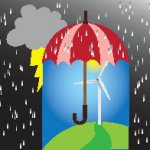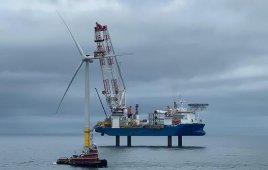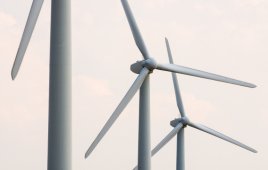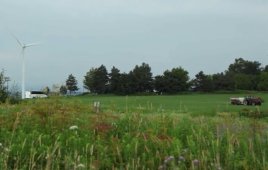T.J. Rolfing / Account Executive / Holmes Murphy & Associates / www.holmesmurphy.com
Simplicity is not a concept associated with selecting insurance for a wind project. This is mostly due to the immaturity of the industry, substantial capital investments, and legal contracts. Because of these constants, certain coverage and limits are required but not needed, while other coverage and limits are needed but not requested. For instance, coverage should be considered for certain non-project-owned assets owned by the power purchaser, flood and earthquake insurance, and what to expect once the OEM warranty expires. But often, they are not.
The dependent or contingent business interruption endorsement is one underused coverage. The common mistake is that risk advisors and project owners do not thoroughly read the Power Purchase Agreement (PPA). For most fixed-priced PPAs, the utility must purchase a project’s power once it hits the meter, regardless if used or not. On the surface, the PPA appears straight-forward – the farm produces the power and the utility must buy the power. The problem occurs when the PPA has a clawback provision stating any force majeure (act of God) damage to the utility’s property excludes it from having to purchase power.
For example, let’s say a major ice storm takes down several miles of transmission line. The storm did not directly impact the wind project, however, its transmission line is damaged downstream from the project’s metered substation. Without a dependent or contingent business interruption endorsement, this claim would be an uncovered event. Getting power and revenue flowing again would be at the mercy of the utility’s repair crew.
Flood and earthquake exposure is based on the project location. Most lending agreements do not take this into consideration and require large limits regardless of threat likelihood. Flood and earthquake limits are not typically held “in house” with insurance companies. To comply with the limit requirement, the insurance company must purchase coverage in the global reinsurance marketplace. Over the past 24 months the reinsurance marketplace has been hit hard with catastrophic events, which have increased the cost of the coverage. When flood and earthquake exposures are low to nonexistent, the requirement to purchase such coverage will have a direct impact on a project’s bottom line.
Prior to warranty expiration, equipment breakdown coverage hides under the veil of the OEM expecting the warranty to be the first line of defense for losses. This translates into low deductibles and aggressively priced equipment-breakdown premiums. Once the OEM warranty has expired, equipment breakdown coverage is front and center and becomes the first and only line of defense for equipment losses.
Insurance companies have been paying unexpected equipment breakdown claims as the U.S. wind industry matures, equipment continues to age, and OEM warranties expire. The result is a tightening of the underwriting guidelines. Without proper documentation, such as the reservation of rights letter to an OEM, maintenance reports, and post warranty inspections, a project owner could see deductibles double to quadruple, along with increased premiums.
Although insurance is sometimes viewed as a necessary evil, one thing is clear—a project owner must partner with a risk-management team that can help negotiate and provide guidance on true exposures. WPE
Filed Under: Featured, Insurance, Policy






